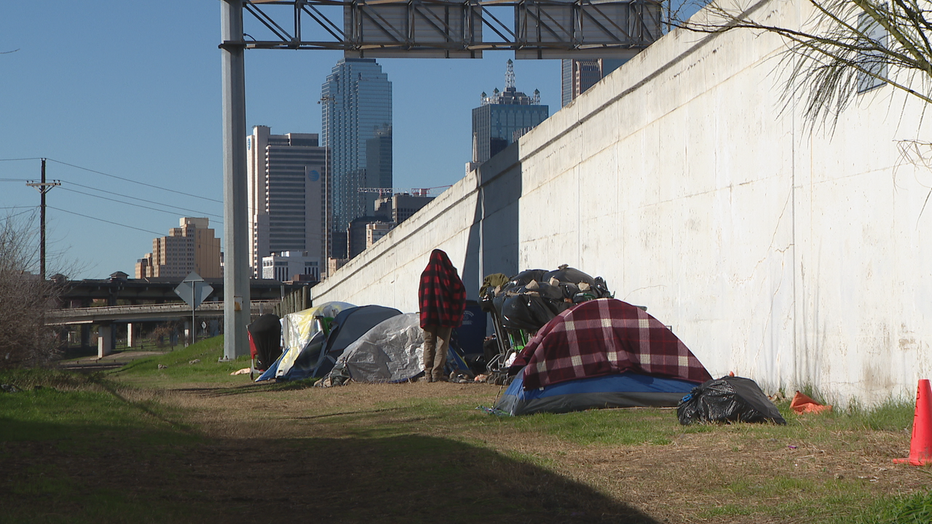Dallas non-profit pushes city council to spend $3M on youth homeless shelter, with focus on LGBTQ community

Dallas non-profit pushes city council
to spend $3M on youth homeless shelter, with focus on LGBTQ community
DALLAS - A Dallas non-profit is asking the city council to invest $3 million in a youth homeless shelter.
The investment would help those in the LGBTQ community, like A’Dontis Barber.
It’s been more than a decade since Barber says he was kicked out of his family’s Dallas home because of his sexual orientation.
“When I was…17, or 18, my mom found my diary and made copies of it,” he recalled.
Barber said that he became homeless almost overnight.
“Lost, hurt, confused, bewildered,” he added.
“The one story that we hear over and over, and over again is, I was kicked out of my home when I came out,” said Josh Cogan, president and CEO of Outlast Youth. “Outlast Youth is an advocacy organization for LGBTQ youth experiencing homelessness.”
For this purpose, the U.S. Department of Housing and Urban Development defines youth as ages 12-24.
Cogan said there are a number of transitional living programs for youth experiencing homelessness in Dallas.
Typically, they’re 15-18 month programs, but Cogan’s non-profit is pushing the city of Dallas to develop an emergency shelter for young adults between the ages of 18 and 24.

A shelter that is not exclusive to the LGBTQ community, but can be more responsive to their specific needs.
“We call it LGBTQ youth focused,” he explained.
Cogan says that across the country, while 7-10 percent of youth identify as LGBTQ, the percentage of homeless youth who are LGBTQ is much higher.
There are a number of emergency shelters across Dallas, but shelters like The Bridge take in all age groups, which might be uncomfortable for young adults to be around people who are decades older.
A big question, however, comes down to cost.
Outlast Youth wants the Dallas City Council to set aside $3 million from the $20 million dedicated to homelessness in the 2017 bond package.
It’s been discussed before, but Outlast Youth is formally announcing a goal on Monday as part of its local policy priorities for LGBTQ youth experiencing homelessness.
“If you’ve been aged out of foster care, or you’ve been kicked out of your home, and you don’t have a place to go that night,” Cogan explained.
The goal will be to eventually move the youth from emergency shelters to a more stable situation.
“It’s made me a lot stronger, but life is still a crawl, life is still a struggle,” Barber said.
Barber recently moved to Kansas City, where he says he’s off the streets. But he believes that back home in Dallas, there are plenty of others facing the struggles he did.
“Countless. The dogma and stigma behind homosexuality is still baffling,” he added.

